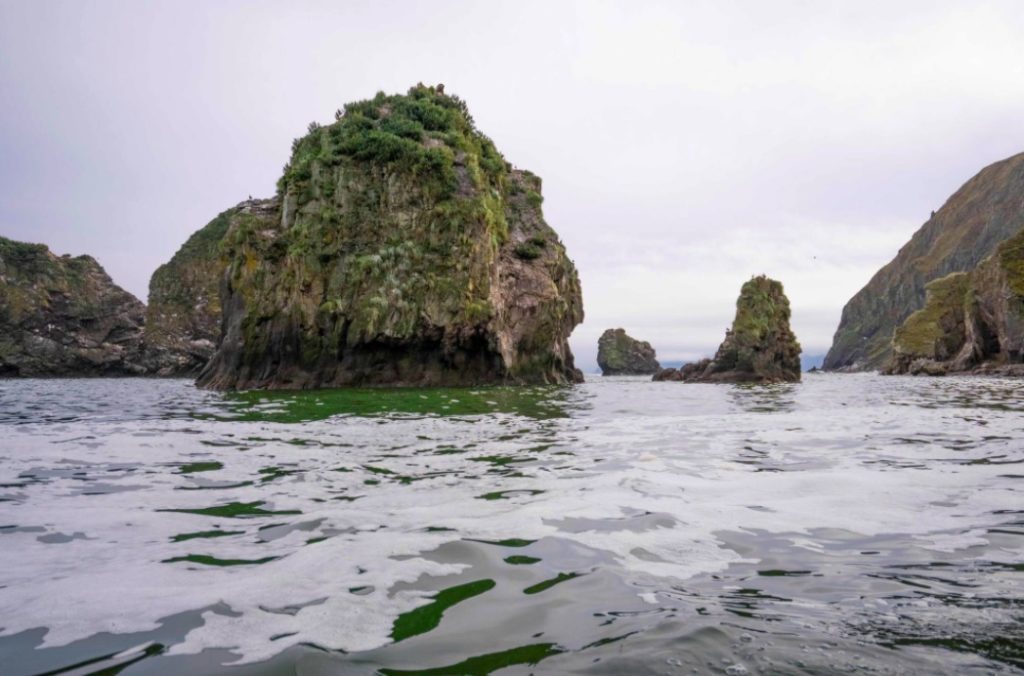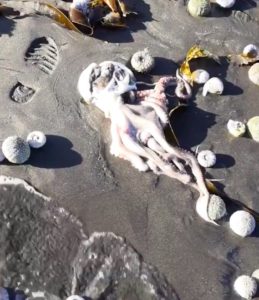Russia scrambles to identify source of eco-disaster

Pollution of the Pacific shoreline off the remote Kamchatka Peninsula has caused the mass death of marine creatures.
Local residents sounded the alarm in late September as surfers experienced stinging eyes from the water, and sea creatures including seals, octopi and sea urchins washed up dead on the shore.
Coming on the heels of a massive oil leak in Siberia, the latest incident has sparked a large-scale investigation with fears that poisonous substances in underground storage since the Soviet era could have leaked into the water, according to Japan Times.
“The most obvious answer where the source of the pollution could be is the Kozelsky poisonous chemical site,” said Kamchatka Gov. Vladimir Solodov, after prosecutors, natural resources inspectors and criminal investigators visited the site and tested soil and water from a nearby river.
The unguarded site, opened in 1979 to store pesticides, today has no legal owner.
Local authorities in the eastern Russian city of Petropavlovsk-Kamchatskiy have been warning people against visiting the beach after surfers first complained of partially losing their eyesight and experiencing headaches, fevers and nausea.
“I noticed the ocean had a strange taste and didn’t smell like it usually does. My eyes hurt, I had a dry, scratchy throat and my body itched horribly,” Anton Morozov, founder of local surfing school, Snowave, told Ecowatch.
He and his team first noticed their symptoms in early September, but didn’t associate them with the ocean until later in the month when they reported them to the authorities.
The authorities took samples from the ocean where, by the end of September, Morozov said a “yellowish-greenish liquid” had appeared along a 20 to 30-kilometer (12-18-mile) stretch of the shoreline.

Image courtesy of Kristy Rozenberg
According to Japan Times, a team of divers from a state nature reserve found a “mass death” of sea life at a depth of 5 to 10m, Ivan Usatov of the Kronotsky Reserve says that “95 percent are dead.
“A few large fish, prawns and crabs are left, but only a very small number,” the scientist says.
WWF Russia said in a statement that the pollutant appears not to be oil, but a “highly toxic transparent substance that is highly soluble in water”.
Acting Minister of Natural Resources and Ecology, Aleksey Kumarkov, said that after checking water samples, experts found oil deposits as well as other chemicals such as phenol, according to the Independent.
Environmentalist Dmitry Lisitsyn, head of local NGO Sakhalin Environmental Watch, told EcoWatch there have been no visible signs of oil on the surface of the water, and the bottom-dwelling sea creatures that have been found dead are not normally linked to oil spills.
“Petroleum products are lighter than water — they form a film at the top of the water, which mainly kills birds. Oil products aren’t poisonous enough to kill such a huge amount of animals,” he says.
Lisitsyn is “convinced” the water pollution is linked to a leak of decades-old expired rocket fuel from the Radygino military base located 10 kilometres from Khalaktyrsky beach.
“It’s very likely that the waste disposal site there started to leak, maybe the storage tanks broke and a large amount of rocket fuel was washed into the ocean,” Lisitsyn told EcoWatch, speculating that the noxious liquid could have been washed into the ocean during a cyclone that hit the area on September 9.
“The military base needs to be examined, as do the storage locations and all the streams of water that flow down from it into the ocean,” he says, adding that the components of rocket fuel are carcinogenic and that if it were spilling uncontained into the ocean, it could have long-term effects — not just for marine life.
“They are very harmful to people. I wouldn’t recommend walking along this beach or breathing in the fumes there.”










